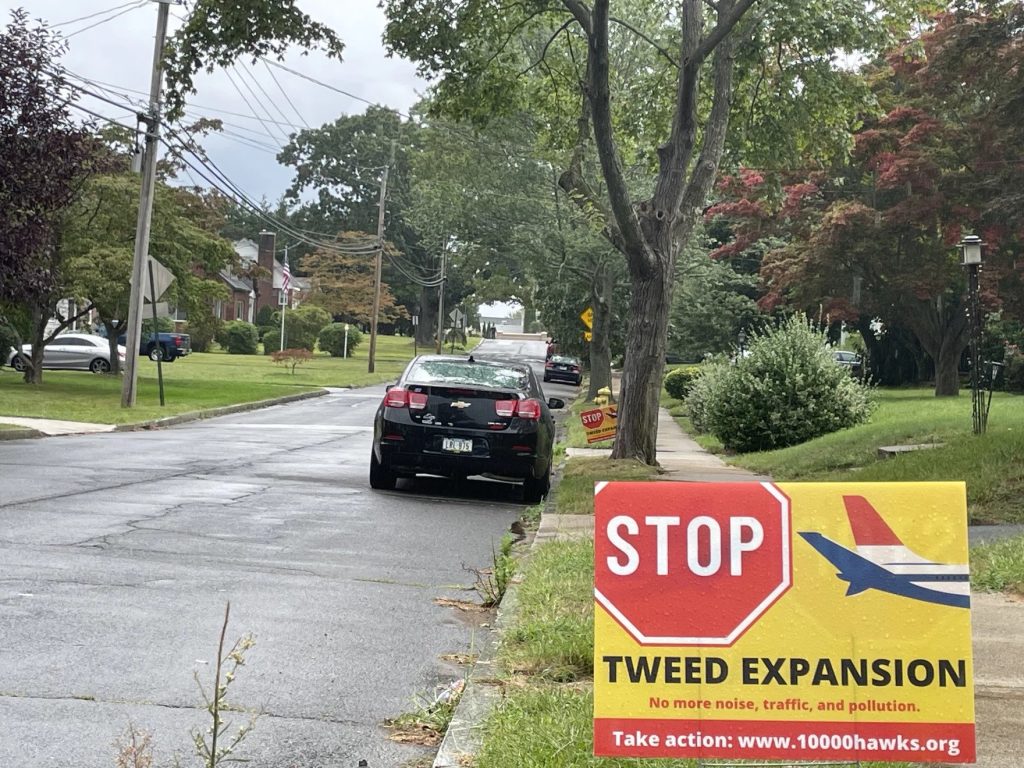Time and again, Connecticut has proclaimed its commitment to climate action. The state goal is to reduce greenhouse gas emissions by 45% below 2001 levels by 2030 and to attain a zero-carbon energy supply by 2040. Each year we spend hundreds of millions of dollars on programs aimed at reaching those targets. Meanwhile, the governor, state officials, environmental groups, and residents alike are conveniently ignoring the jumbo jet in the room — airport expansion.
The Climate Contradiction
Connecticut has long invested in building efficiency and renewable energy programs, which are vital to combating climate change. However, the ongoing expansion of Bradley International and Tweed New Haven airports directly contradicts these efforts. Aviation is the most climate-intensive form of transportation. For example, a single roundtrip non-stop flight from Bradley to Dublin results in greenhouse gas emissions per passenger that are equivalent to the emissions produced by driving a gasoline-powered car for nearly two months, and significantly more for flights with stops.
In November, Avelo Airlines plans to add seven new routes from Bradley to places like Cancun and Orlando. These roundtrip flights alone would release nearly 39,000 metric tons of emissions annually and likely over 40,000 metric tons if taxiing, airport circling and rerouting are factored in. To put this into perspective, the total Energize CT emissions reduction for all residential programs in 2023 was just over 40,000 metric tons. In other words, the entirety of Connecticut’s home efficiency work could be negated by this one set of additional flights. One might argue that passengers would have just taken other existing flights and that is the case for some but air traffic worldwide is increasing with emissions doubling between 1990 and 2019 Since 2019 air freight emissions have increased 25%. Closer to home, Bradley saw a 23% growth in passengers from 2013 through 2018 and post-pandemic the growth continues.
Local Impact
Large airliners release several metric tons of pollutants into local communities each time they depart. This mix of carbon dioxide, water vapor, nitrogen oxides, volatile organic compounds, and particulate matter warms the climate at three times the rate of CO2 emissions alone. Yet, there have been no studies on the effect of this warming on local weather patterns. Airport pollution also increases the risk of asthma, heart disease, high blood pressure, and other maladies. The expansion of London’s Heathrow Airport has been linked to increased levels of ultrafine particles (UFPs), which penetrate deep into the lungs and bloodstream, causing inflammation. As Bradley and Tweed airports continue to grow, the health risks for nearby communities increase.
Debunking the Economic Myths
Proponents of airport expansion claim it brings economic growth, job creation, and a boost to local economies. However, much of the economic benefit goes to airlines, travelers, and businesses outside Connecticut. Many of the new routes are to tourist destinations, potentially drawing dollars away from the state. Moreover, frequent air travelers tend to be from wealthier backgrounds, while those living near airports — who often bear the brunt of expansion — are left with fewer benefits.
Embracing Sustainable Alternatives
Instead of expanding airports, Connecticut can achieve economic growth by continuing to invest in sustainable infrastructure like high-speed rail, electric buses, and improved public transportation. These initiatives create jobs, reduce traffic congestion, lower transportation costs, and improve air quality. Additionally, enhancing local tourism could keep dollars in state, benefiting a broader range of residents and businesses.
A Call to Action for Connecticut’s Future
Airport expansion jeopardizes public health and undermines our substantial investments in clean energy and energy efficiency. The economic benefits are not as clear-cut as they appear, and local communities have had no voice in the decision-making process regarding airport growth.
Connecticut should impose a moratorium on flight route expansion and cap airport emissions at net zero. Comprehensive studies must be undertaken, including ongoing air and noise monitoring in communities within a 10-mile radius of airports especially under flight paths. Federal lawmakers must push for stricter regulations requiring airlines and airports to create emission reduction plans. The FAA, airports, and airlines should be held accountable for the health impacts of aviation on local communities with a significant portion of revenue supporting air quality measures for homes in affected areas.
The Connecticut Airport Authority currently lacks a climate action plan. Sustainable Aviation Fuel (SAF) is part of the solution, but industry-wide adoption is many years away. Tweed has been selected by NASA and the National Renewable Energy Laboratory for the “Airports as Energy Nodes” program but again, it is likely that practical outcomes from this program are years away. We need action now. The Authority must set ambitious emissions reduction targets in collaboration with airlines and continuously assess the impact of airport activities on air quality, noise pollution, and community well-being. Governor Lamont should appoint community representatives to the Authority’s Board to ensure their interests are heard.
Nonprofit organizations play a vital role in raising awareness about the harmful effects of airport expansion. They can mobilize communities, advocate for policy changes, and provide research that highlights the consequences of increased aviation.
Local communities near airports are directly impacted by airport pollution and need a place at the table. Residents, and especially town leaders, should demand that the governor and the Airport Authority prioritize community concerns in airport expansion plans. Individuals can do their part by reducing yearly air travel and decreasing use of speedy shipping that requires air freight. Business leaders can reduce employee travel, opting for virtual meetings.
Connecticut residents must hold state leaders accountable to their climate commitments and ensure airport emissions are considered in climate change mitigation plans. Together, we can choose a path that prioritizes clean air, public health, and sustainable economic growth.
Deborah Roe lives in Granby.

